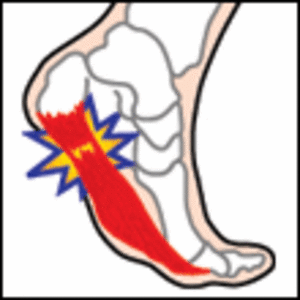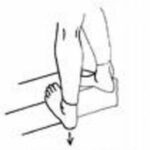I remember the first time I felt it, what seemed like a terrible bruise to my heel. I got out of bed and could hardly walk, it was so excruciating. I wasn’t surprised though. I had just spent the day at Disneyland, running all over the place in nothing more supportive than a pair of little white Keds – no arch support, no cushion there. I thought for sure I had just pounded my heel so badly I had bruised it. But a bruise would go away quickly. This didn’t.
That was my first experience with Plantar Fasciitis. It went on for a year before a doctor properly told me what it was. Still, he didn’t tell me what caused it, how to help it or how to prevent it in the future. Now, after the third time suffering with it, I know. While I still recommend you go see your doctor if you are experiencing pain in your heel or your arch, maybe this bit of information will help you know what to ask and some action you can take to help heal it now and prevent it in the future.
What is Plantar Fasciitis: Plantar Fasciitis, also sometimes called a “bruised heel” or a “heel spur” is actually the inflammation of the fascia or ligaments which connect your calve and foot muscles to your heel and the ball of your foot.
Causes of Plantar Fasciitis: When tightened muscles or repetitive exercise without adequate stretching cause these ligaments to pull away from the heel, it can tear the fascia, even pull away a part of the bone, causing inflammation and often debilitating pain.
Treatment for Plantar Fasciitis: Once the fascia has become torn or inflamed, the healing process may take anywhere from a few months to a full year, even longer if you continue to injure it. The best treatment for fasciitis is to keep weight and stress off of the tissue until it is healed. Staying off your feet indefinitely, however, is impractical for most people.
There are, then, a number of things that you can do to help your foot to heal while getting on with your life.
1) Do curtail running, jogging and elongated walking until the injury is healed.
2) Always wear sturdy, supportive shoes and add a properly fitted arch support. This helps relieve additional stress or “pull” on the afflicted area. You may also add a heel cushion or heel “cup” to add shock absorption to your shoes.
3) Stretch your calve muscles 8 to 10 times or more throughout the day by placing your hands flat on the wall in front of you, then stepping back with one foot and pressing that heel to the ground. Do this slowly at first for three to four repetitions of 20 seconds each time. This allows the more elastic muscle to “give” rather than forcing the less elastic ligaments to have to pull and become even more irritated or damaged. Do this for both calves to help prevent future fasciitis in the other foot as well.
4) While sitting in a chair, hold the ends of a hand towel in both hands and place the center of the towel under the ball of your affected foot. Gently pull your toes toward you, further stretching the underside of your foot. (As with any exercise, never proceed if you feel pain.)
5) Massage your calves and heels before getting on your feet, whenever possible and always step lightly from bed or from your chair when first getting up.
6) Ice the inflamed or painful area 2 to 3 times per day for 10 – 15 minutes to reduce inflammation.
7) Purchase a “night splint” to hold your foot in the proper position to maintain the length of the tight calf muscle and prevent pressure from sheets and blankets from further irritating the injury.
8) Again, always get proper diagnosis and treatment from your doctor. Additional treatment or even surgery may be prescribed.
Best Treatment is Prevention: The first two times I had Plantar Fasciitis, my doctors did not explain to me what caused it or that it could recur if I didn’t take steps to prevent it. I wish I had known then what I know now. After learning the above information during my third round (and third full year) of extreme and debilitating heel pain, I finally met a doctor that explained it. I haven’t hadn’t it come back now for years.
The best treatment, of course, is prevention. In this case, keep up your heel stretches as outlined above. If you have the propensity to get Plantar Fasciitis, without this stretching it could easily return in either foot. Also, continue to wear supportive insoles and shoes rather than sandals, minimally supportive shoes or going barefoot whenever possible. If you take care of your feet and your body, they will take care of you.




